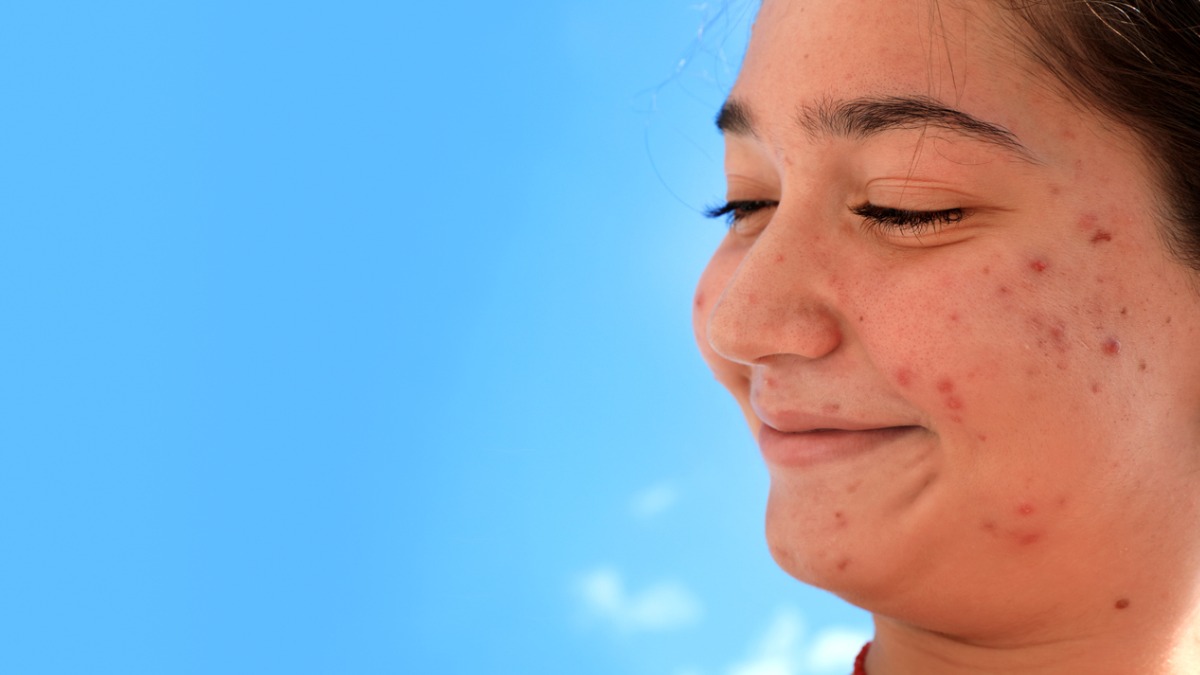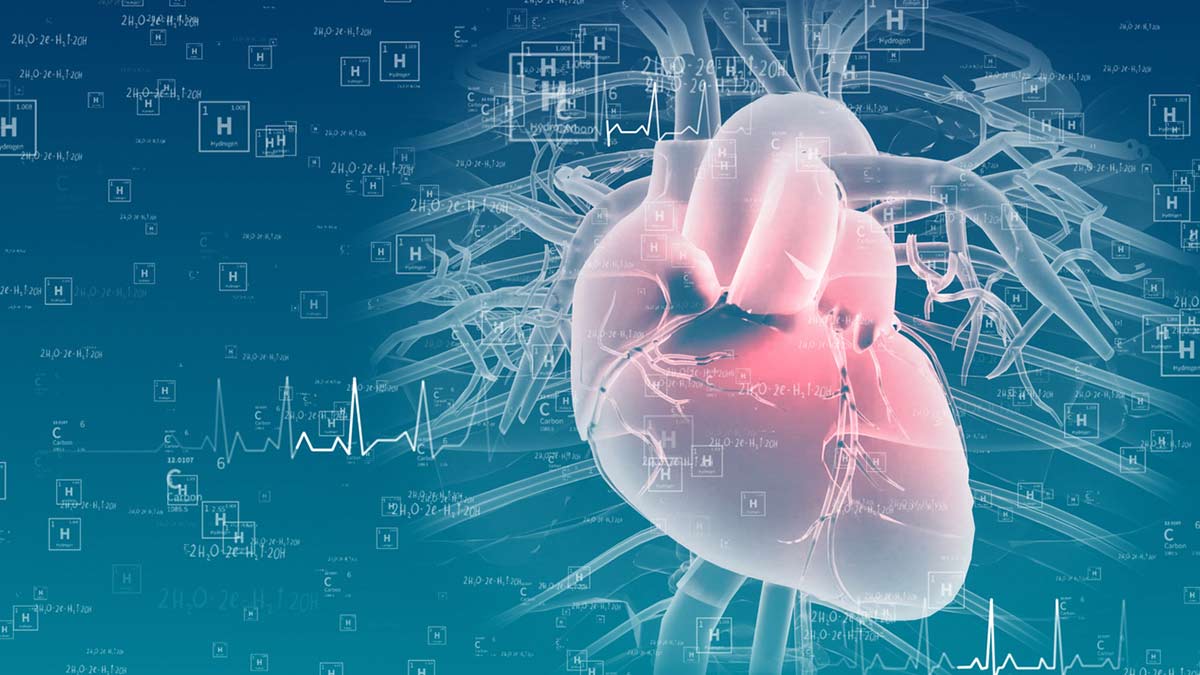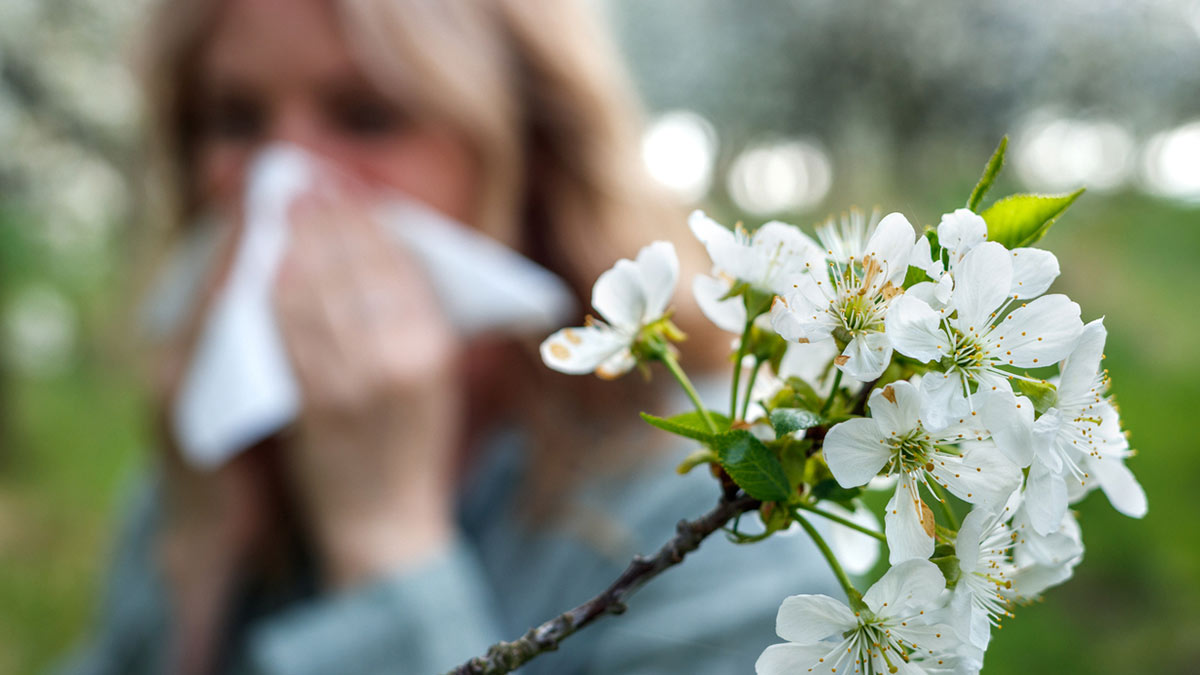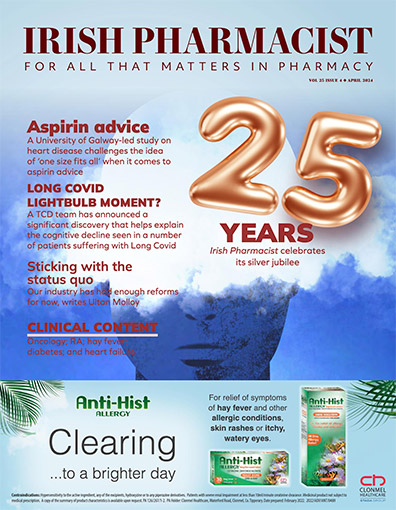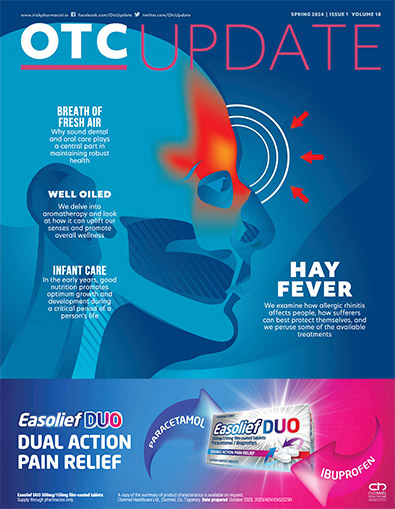A clinical overview of the various forms of acne, including management and treatment options
Acne vulgaris (referred to as acne for short) is a disorder of skin glands that produce a natural oil (sebum). The face, neck, shoulders, upper chest, and back are most frequently affected. It affects more than one-in-two young adults at some stage, usually beginning at puberty and clearing completely before the mid-20s. In many adolescents, acne clears within two years. The reason acne is worse during puberty is due to an increase in sex hormones called androgens, especially testosterone (even women have small amounts of testosterone) and these excess hormones make oil glands overactive and enlarged, thus producing too much oil (sebum). Too much sebum causes the pores or hair follicles to become blocked with skin cells and a creates build-up of bacteria in these blockages. Testosterone levels increase during puberty, peaking in the late teens then levelling-off, hence acne tends to reduce after puberty. Diet has little influence on acne. Despite what is commonly believed, sugary foods and fatty foods, such as chocolate and chips, have not been proven to contribute to acne.
Symtoms
DEFINITIONS AND TERMS USED FOR SYMPTOMS OF ACNE
Medically, clinicians use the term ‘lesions’ to describe the bumps on the skin experienced during acne. Lesion is an overall term that can describe the different bumps caused by acne and includes:
- Papules: Raised bumps.
- Pustules: Raised bumps often know as pimples and filled with yellowish fluid known as pus; pus contains sebum (oil) that gets trapped in the pores mixed with dead skin cells and bacteria.
- Comedones: Raised bumps that can form blackheads and whiteheads.
- Nodules: This is a bump under the skin which may not be visually obvious to some- one else but can be painful.
- Cysts: Look like a boil and can be filled with pus.
Comedonal acne is the name for acne which is characterised by inflamed skin blemishes, ie, papules which are like red bumps. These papules form due to hair follicles and pores becoming blocked with skin cells and oil, which leads to whiteheads and blackheads.
Role of Bacteria
Bacteria on the skin surface intensify the problem by producing chemicals that inflame and irritate the skin. The anaerobic bacterium Cutibacterium acnes (C.acnes) plays an important role in maintenance of healthy skin, but acne creates an ideal enviroment for its excessive growth. An environment which includes inflammation, lesions with excess sebum and dead skin cells allows C.anes to multiply, thus exacerbating the problem and contributing to inflammation. Prior to 2016, Cutibacterium acnes was named Propionibacterium acnes (P.acnes) and was renamed C.acnes to better reflect the biochemical and genomic make- up of this bacterium.
Whiteheads and Blackheads
Whiteheads are tiny little clogged pores just below the surface of the skin which are not inflamed. Blackheads are like whiteheads, except they are open to the air, which oxidises with the sebum and keratin in the skin and gives them a brown/black colour. Do not attempt to squeeze these, as this causes them to get irritated and inflamed and causes a little red bump on the skin (a papule). Papules develop mainly on the T-zone, ie, forehead, nose, and chin. Healthy bacteria on the skin (ie, C.acnes) can form in these papules, causing them to fill with pus and develop a defined white or yellow head on the surface called a pustule.
More Pronounced Lumps
Cysts and nodules are large painful lumps underneath the skin which can take weeks to heal. The only difference between the two is that nodules are hard and don’t have an obvious white/yellow head, whereas cysts are fluid-filled with a defined white or yellow head. Do not squeeze these, as it will cause scarring and possibly spread to surrounding pores.
Medication-Induced Acne
Some medication can cause acne, so doctors and pharmacists must take this into account if patients prescribed these medications present with acne. They should only be reviewed and changed if acne is severe and only if the benefits of changing them outweigh the risks (ie, acne is causing severe psychological issues for the patient), as many of the medications implicated with acne are for serious long- term health conditions so should not be changed without a suitable alternative, which may not always be available. Examples of medication that can cause acne-type symptoms include antiepileptics such as phenytoin, phenobarbital and carbamazepine, mood stabilisers such as lithium, anti-tuberculous medication such as rifampicin, isoniazid and ethionamide, and the immunosuppressant ciclosporin, which is mainly used to prevent transplant rejection and in inflammatory autoimmune conditions such as rheumatoid arthritis and psoriasis.
Acne is not linked to Rosacea
Rosacea is an inflammatory skin disease causing facial flushing, redness, papules, pustules and in some cases permanent dilation of small blood vessels (known as telangiectasia). In rosacea the cheeks, chin, forehead, and nose are usually worst affected, with the rest of the face mainly unaffected. Rosacea can be temporary in some cases, but
is often recurrent or persistent. There are four subtypes of rosacea, these are: Erythematotelangiectatic rosacea, papulopustular rosacea, phymatous rosacea, and ocular rosacea.
Rosacea is sometimes referred to as acne rosacea; however, this can cause confusion, as rosacea is unrelated to acne vulgaris. Rosacea is mostly diagnosed in people aged 40-to-59 years and is rare in people under 30.
Some of the treatment options like azelaic acid (Skinoren) and oral antibiotics (ie, minocycline, doxycycline) are similar for acne and rosacea. I discussed rosacea previously in Irish Pharmacist.
Self-Help
- Most cases of mild acne will be helped by washing affected areas no more than twice daily; washing more often can irritate acne more.
- Use a mild soap or cleanser and use lukewarm water, as very hot or cold water can worsen acne.
- Avoid vigorous scrubbing while washing acne-affected skin. Avoid the use of abrasive soaps, cleansing granules, astringents, or exfoliating washes. A soft washcloth and fingers should be used instead.
- Do not try to ‘scrub off’ blackheads. Scrubbing or picking acne will exacerbate acne.
- Women should avoid overuse of make-up and cosmetics and avoid greasy cosmetic products. Remove make-up completely at night.
- If dry skin is a problem due to the medication used for acne, aim to use a fragrance-free, water-based emollient. Avoid ointments or oil-rich creams, as they clog pores.
- Cream preparations tend to be less irritating to acne than gels.
- Avoid foods that patients feel worsen the problem, though there are no specific food groups that are thought to exacerbate acne. A healthy diet is the best recommendation. uWhile sunlight helps our skin produce vitamin D, it is a myth that sunlight improves acne.
Treatment: Over-the-counter products
BENZOYL PEROXIDE
Benzoyl peroxide works by:
- Preventing dead skin plugging hair follicles.
- Unblocking skin pores and speeding-up the production of new skin cells.
- Killing bacteria on the skin that cause plugged follicles to become infected. This reduces antibiotic resistance when benzoyl peroxide is used with antibiotics.
Studies show that benzoyl peroxide may improve acne more rapidly than topical retinoids.
AVAILABILITY OF BENZOYL PEROXIDE
From 2012, pharmacy staff and consumers noticed many benzoyl peroxide products were discontinued by manufacturers, so brands like Panoxyl, Brevoxyl and Quinoderm, which contained benzoyl peroxide, disappeared off the shelves, although Quinoderm still offers a facewash only that does not contain benzoyl peroxide. There was little or no communication from manufacturers as to why they went off the market in Ireland and other countries. For example, Panoxyl, which was made by Stiefel (a subsidiary of GlaxoSmithKline), stopped production of Panoxyl due to what it called a “global manufacturing supply issue” and it was taken off the market along with other Stiefel acne products. Currently in Ireland, the only Panoxyl product available to order from wholesalers by pharmacies is Panoxyl 10% acne wash, which is unlicensed in Ireland (it’s an American product) so is only available to patients via a prescription here.
Acnecide gel contains 5% benzoyl peroxide and is the only licenced benzoyl peroxide product available over-the-counter in Ireland. It is advised to use Acnecide after washing with a mild cleanser and water, applying once or twice daily.
PREVENTING SIDE-EFFECTS OF BENZOYL PEROXIDE
Benzoyl peroxide should be used in moderation and not long-term. A six-week course of treatment with benzoyl peroxide is required to clear acne. Drying and peeling of the skin can occur; drying and peeling can be prevented by reducing the frequency, ie, every second day. Those with sensitive skin can reduce application from twice-daily to once-daily before going to bed.
Benzoyl peroxide increases sensitivity to sunlight so when in strong sun, sunscreen
is advised. Avoid contact with hair, clothes, towels, and bed linen, as benzoyl peroxide may bleach these. Wash hands after applying benzoyl peroxide products to prevent irritating the hands or inadvertently rubbing in the eyes.
Consider referring to a GP if:
- The acne is severe, angry-looking, inflamed, or widespread.
- No improvement despite the correct use of benzoyl peroxide.
- Any suspected case of medication- induced acne.
PRESCRIPTION MEDICINES
In relation to the topical treatment options discussed below, a general consideration
is that different formulations may be considered depending on skin type; for example, creams may be more beneficial for dry skin and gels and topical solutions may be more beneficial for oily skin.
Treatment regimens by severity of Acne
1. Mild Acne
Acne is classified as mild when it is limited to the face and lesions are not inflamed.
TREATMENT OPTIONS: TOPICAL RETINOIDS
Topical retinoids are the next option if there is no response from benzoyl peroxide. Topical retinoids work by reducing production of sebum while also preventing dead skin cells plugging hair follicles. Adapalene (Differin 0.1% Gel or Cream) is a topical retinoid available in Ireland. Retin A (Tretinoin) is now unlicensed in Ireland and isotretinoin (Isotrex) is not available in Ireland (only in UK). Adapalene tends to be easier on the skin, so has fewer side-effects like redness and peeling than isotretinoin.
Topical retinoids can cause mild irritation and stinging of the skin. Apply topical retinoids sparingly andavoid excessive exposure to sunlight and UV. A pea-sized amount should be enough to cover the whole face. Starting topical retinoids too quickly/regularly increases risk of skin redness, soreness, and peeling. Some dermatologists advise starting topical retinoids once-weekly and increasing slowly up to a dose of once- daily, thus allowing the skin to build up tolerance to the retinoid. It is best to apply topical retinoids at night, as sun causes degradation of retinoids, reducing the effect. Another reason acne treatments (not just retinoids) are recommended to apply at night is to prevent new spots developing overnight. Topical retinoids should be avoided during pregnancy as they carry a risk of causing birth defects. A six-week course is usually required, but patients may need to continue it on an on-off basis.
2. Mild-to-Moderate Acne
Mild-to-moderate acne primarily affects the face but may affect the neck, shoulders, upper chest and back. Topical therapy is recommended first-line and only consider oral medication if there is no improvement.
Treatment Options (All Topical)
A. Benzoyl peroxide and topical retinoids combinations
Combination topical therapies should be considered if one product on its own does not work. Combined products are rarely needed for mild acne. Topical retinoids become less stable hence less effective when used in combination with benzoyl peroxide, so if using both, they should be used at different times. However, the combination of topical benzoyl peroxide and adapalene are stable when used together, so Epiduo gel is an all-in-one option containing benzoyl peroxide 2.5% and adapalene 0.1%.
B. Topical antibiotic options
Topical antibiotics reduce bacteria that infect plugged hair follicles. Topical antibiotics come as lotions or gels and are applied once or twice a day. A six-to-eight- week course is recommended. After this, treatment is usually stopped to reduce risk of antibiotic resistance. Side-effects such as minor irritation, redness, burning, and peeling are uncommon.
Topical antibiotic options for acne include clindamycin (Dalacin T, Zindaclin) and erythromycin (Zineryt). Topical erythromycin (Zineryt) may be reserved for patients with more sensitive skin who may experience more side-effects from clindamycin, benzoyl peroxide and/or topical retinoids. Monotherapy with topical antibiotics is generally not recommended because of risk of antibiotic resistance. Topical erythromycin is associated with more resistance than other antibiotics.
A topical benzoyl peroxide combined with a topical antibiotic is a popular option with clinicians in Ireland. An all-in-one combination option is Duac, which contains benzoyl peroxide 5% and clindamycin 1%. A topical retinoid combined with a topical antibiotic is another option and an example available is Treclin, which contains clindamycin 1% and tretinoin 0.025%. Topical retinoids are thought to improve antibiotic efficacy by improving penetration and giving synergistic comedolytic and anti-inflammatory effects. All the combination topical treatments mentioned in this paragraph are applied once-daily in the evening.
C. Azelaic acid
Azelaic acid (Skinoren) is a topical anti-inflammatory licensed for mild-to- moderate papular-pustular acne of the facial area. It works by dissolving dead skin and killing bacteria. It is applied twice- daily, or once-daily for sensitive skin. It is considered less effective than benzoyl peroxide and topical retinoids.
While azelaic acid can cause side-effects like burning, itchiness, stinging, redness and dryness of the skin, these side-effects tend to be milder than benzoyl peroxide and topical retinoids. Tolerance to side- effects usually develops with ongoing use. Wash hands after each application to avoid irritating hands or inadvertently rubbing in the eyes. Avoid alcoholic cleansers, tinctures and astringents, abrasives and peeling agents when using azelaic acid to minimise irritation; this advice is also true for benzoyl peroxide and topical retinoids.
Azelaic acid can be considered an alternative to benzoyl peroxide and topical retinoids when side-effects like skin irritation is an issue. Another advantage to azelaic acid is that is does not cause as much photosensitivity as benzoyl peroxide and topical retinoids, so there is no need to avoid sunlight.
3. Moderate Acne
Moderate acne is characterised by lesions affecting a greater area (ie, whole face and parts of the upper body), or acne that fails to respond to topical antibiotics.
TREATMENT OPTIONS
A. Oral antibiotics
Systemic treatments are the next option for moderate acne and are especially useful for harder-to-reach areas, such as acne on the back. Apart from the antimicrobial effect, antibiotics are thought to exert an anti-inflammatory effect on acne, thus contributing to their effectiveness.
Oral antibiotic options for acne include:
- Doxycycline 100 mg daily
- Lymecycline 408mg daily
- Minocycline 100mg (slow release) daily
- Erythromycin 500mg twice daily.
It takes six weeks to notice significant improvement from oral antibiotics. More recent guidelines recommend treatment with oral antibiotics is discontinued after three months to reduce risk of antibiotic resistance (ie, to C.Acnes) but can be repeated in future if there is recurrence. Minocycline is less often recommended than other tetracyclines for acne due to increased risk of a lupus erythematous-like syndrome and auto- immune hepatitis, as well as a small risk of irreversible pigmentation.
Side-effects of tetracyclines include nausea, vomiting, and diarrhoea. Tetracyclines can make skin sensitive to sunlight. Avoid milk/indigestion remedies or iron/zinc supplements two hours before or after taking a tetracycline, as they reduce tetracycline absorption, and take on an empty stomach.
European acne guidance indicates increased microbial resistance to erythromycin, so it should only be used when tetracyclines are not tolerated or are contraindicated, ie, in pregnancy, breast-feeding. The most common side- effects of erythromycin are nausea and mild stomach pain.
To give improved patient outcomes and reduce resistance, adding an oral antibiotic to the topical treatment such as benzoyl peroxide or a topical retinoid is recommended. Oral antibiotics should not be used with topical antibiotics, as this increases risk of antibiotic resistance. None of the oral antibiotics are considered any more effective than the others and choice depends on the likes of possible resistance, side-effects and patient profile, ie, pregnant, intolerant to tetracyclines.
B. Combined oral contraceptives
Women with acne who require contraception or to control menstrual symptoms can take the oral contraceptive co-cyprindiol (Dianette), which contains a combination of the anti-androgen progesterone called cyproterone acetate 2mg (this is the acne- reducing component) and the oestrogen ethinylestradiol 25mcg. Two-to-six months’ usage is needed before there is a significant improvement in acne.
A combined oral contraceptive can be used in combination with topical treatments or oral antibiotics for female patients with more moderate-to-severe acne. If no contraception is needed, the doctor and patient will decide if hormonal treatment is a good option, which often comes down to the severity of the condition and success of previous treatments.
Progestogen-only contraceptives make acne worse, so should be avoided. From a contraceptive perspective, antibiotics that do not induce liver enzymes, such as doxycycline, may be considered to use with oral contraceptives, as there is less risk of contraceptive failure.
SHOULD CO-CYPRINDIOL STILL BE THE FIRST-CHOICE ORAL CONTRACEPTIVE FOR ACNE?
A Cochrane Review from 2012 found that combined oral contraceptives are effective for inflammatory and non-inflammatory acne, but found little differences in the efficacy of the different types, including cyproterone acetate (Dianette). This was an interesting finding, considering cyproterone acetate has long been considered the oral contraceptive of choice for acne in females and is the only oral contraceptive licensed for acne.
Dianette is licensed for severe acne. However, it can increase risk of venous thromboembolism and a 2013 BMJ review questioned whether it should be first- choice oral contraceptive compared to other combined oral contraceptives.
This is due to the fact cyproterone has a 1.5-to-two times higher risk of venous thromboembolism compared to combined oral contraceptives containing levonorgestrel and has a similar risk of venous thromboembolism to oral contraceptives containing desogestrel, drospirenone and gestodene.
In many NHS Trusts in the UK, ethinyloestradiol 30 micrograms with norethisterone or levonorgestrel are recommended as first-choice as a combined oral contraceptive for acne, which is a move away from co-cyprindiol as first choice.
INTERACTION BETWEEN ANTIBIOTICS AND ORAL CONTRACEPTIVES
The theory that intestinal tract flora develop resistance to antibiotics after three weeks means women have been traditionally advised to take extra contraceptive precautions (ie, barrier contraceptive) for the first three weeks of antibiotic use. The theory is that the reduction in intestinal tract flora due to antibiotics for the first three weeks reduces antibiotic absorption from the intestinal tract. However, this theory has been mainly dismissed in recent years, so no extra contraceptive method is generally advised with the contraceptive pill for the first three weeks of antibiotic use, as there is little evidence of contraceptive failure due to antibiotics. For example, an observational database study from BMJ (Evidence-Based Medicine) in August 2020 could not find increased risk of contraceptive failure with antibiotics. The exception is the rifampicin antibiotics used for tuberculosis, which reduce contraceptive failure due to the liver enzyme-inducing effect (cytochrome P450) of rifampicin, which increases metabolism of the contraceptive, thus reducing effect.
4. Severe Acne
Characterised by the condition being widespread on the face and upper body, especially if nodules and cysts occur and scarring occurs. Can be considered if acne is causing severe psychological stress too. Referral to a dermatologist is advised for severe acne.
Treatment Options
The Galderma Acnecide range contains 5% benzoyl peroxide and incorporates an acne spot treatment, gel, face wash and a cleansing product that is suitable for other larger areas of the body that require treatment. Acnecide Face Gel Spot Treatment combines the active ingredient benzoyl peroxide with a microsphere technology, which helps absorb excess oil while also releasing glycerine to help soothe and hydrate the skin. The 5% w/w Gel is indicated in the management of acne vulgaris and contains hydrous benzoyl peroxide equivalent to benzoyl peroxide 5% w/w, with the excipient propylene glycol 40mg/g.
Oral isotretinoin (Roaccutane) should be trialled on its own, especially if other treatment options such as systemic antibiotics have failed and especially if scarring is occurring and it is having a major psychological impact on the patient. Oral isotretinoin works like topical retinoids, but has a more potent effect. Isotretinoin works in four ways:
- Reduces bacteria, especially C.acnes. uDecreases size and secretions of sebaceous glands.
- Stops comedones forming.
- Reduces inflammation.
Due to safety concerns and precautions, a dermatologist should initiate isotretinoin. Isotretinoin is used with caution with a history of depression, as it can exacerbate the condition. Despite initial concerns, there is no medical evidence that isotretinoin increases suicide risk.
Rarely, isotretinoin causes hepatic impairment, elevated serum lipid levels and pancreatitis, so it is necessary to
do lipid and hepatic blood tests before starting isotretinoin. Isotretinoin is usually started at low dose (ie, 0.5mg/kg/day) and the blood test is repeated after one month at this dose before considering increasing to 1mg/kg/day after one month. These blood tests should be repeated after another one and two months at this full dose, and then every two months after that. Blood tests may be required more frequently if an abnormality is found (ie, lipid or hepatic abnormality).
A four-to-six-month course is a usual treatment range. Acne may get worse during the first seven-to-10 days of treatment. This is normal and is caused by the medication pushing out bacteria present in deeper layers of the skin. Isotretinoin carries elevated risk of causing serious birth defects. Women of child-bearing age can only be prescribed isotretinoin following a negative pregnancy test. It is recommended this is repeated monthly throughout isotretinoin treatment. Two forms of contraception are recommended while women use isotretinoin (oral contraceptive and carrier contraceptive). The progesterone- only contraceptive may be less effective while taking isotretinoin so is not recommended and as mentioned earlier, progesterone-only contraceptives can worsen acne.
If a further course of isotretinoin is required after the initial course (ie, after using for six months), then a minimum period of eight weeks is recommended before re-starting isotretinoin. Combining isotretinoin with tetracyclines should be avoided due to the risk of intracranial pressure. Isotretinoin is recommended as monotherapy for acne.
COMMON SIDE-EFFECTS OF ISOTRETINOIN:
uInflammation, dryness and
cracking of the skin and lips. This is relieved by applying moisturising cream and lip balm.
- Dryness inside the nose, leading to mild nosebleeds. Applying a thin layer of petroleum jelly to the inside of the nose can prevent and ease.
- Headaches.
- Skin rash and peeling. uInflammation of eyelids (blepharitis). uInflammation and irritation of eyes. uBack, muscle and joint pain.
- Blood in urine.
- Bruising
References: Available upon request
Disclaimer: Brands mentioned in this article are meant as examples only and not meant as preference to other brands.
Written by Eamonn Brady MPSI (Pharmacist). Whelehans Pharmacies,
38 Pearse St and Clonmore, Mullingar. Tel 04493 34591 (Pearse St) or 04493 10266 (Clonmore) W. www.whelehans.ie Eamonn specialises in the supply of medicines and training needs of nursing homes throughout Ireland. Email ebrady@whelehans.ie
